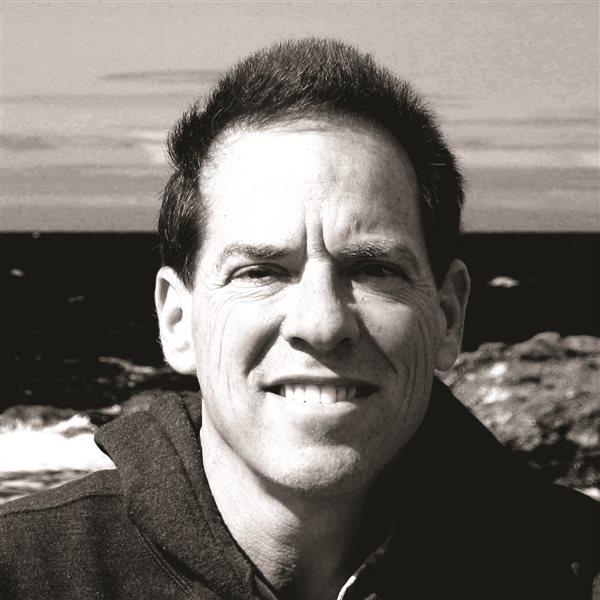"I wasn't arrested," Jim replies, chuckling. "I was 'temporarily detained.'" At Jim's invitation, Mark and I have flown from Flagstaff to see the new 2009 single-engine Cessnas at Phoenix Deer Valley Airport.
Jim is western regional manager for Cessna Pilot Centers, covering much of the Mountain and Pacific West, Alaska, and western Canada. "Basically I'm a business coach," Jim explains over lunch. "My job is to help flight schools be more successful. I particularly enjoy mentoring flight instructors on customer service, customer retention, and getting the most out of the Cessna pilot training curriculum."
"Do you fly that territory yourself?" asks Mark, as we head to the flight line.
"It's a rough life," says Jim, tongue in cheek. "Cessna assigns me a new 172, and any appointments within about 600 miles I fly to myself." He pats his sparkling Skyhawk. "Last week I called on Cessna Pilot Centers in Salt Lake City, Ogden, and Heber City, and met a prospect in St. George. Pretty productive for a one-night trip from Phoenix, eh? That flight was amazing because Utah's covered in snow right now. Having grown up in Phoenix I'm not much of a cold-weather guy. But flying over white-capped mountains in my cozy little Skyhawk with the heater on was just beautiful."
Jim next described flying north from Seattle to visit the Cessna Pilot Center at Vernon, British Columbia. "I've never been to Canada before--the mountains were awesome, and to experience crossing the border and dealing with customs was fun."
For that matter, Jim delights in almost every trip. "Having largely flown around Phoenix, most of my instrument time is simulated. But with California in my territory, I now get frequent opportunities to pop through cloud layers and do some instrument work. I remember flying from Santa Rosa to Napa one morning, in sunshine above a white layer of clouds. ATC put me in a holding pattern, the autopilot was doing all the work, and I just sat there smiling ear to ear. It was one of those times when you sense how fast you're going because you're skimming the cloud tops. And it was like, 'Man, they pay me to do this?'"
Our talk turns to spreading such joys of flying among new pilots. "Several generations ago flying was considered magical," Jim explains. "But to the general public today, flying is no longer magical. To those of us who fly, being at the controls is magical, but those who haven't started yet can't know that. They think looking out a little airline side window is somehow comparable to piloting an airplane, so it comes to 'What is this magic my pilot friend is always talking about, I don't get any kick out of that airliner, so why would I want to fly a small airplane?'
"Of course piloting is totally different than being a passenger. Unfortunately, you could put that on every billboard in the world, but until people actually try it, it's like 'whatever.' That's why pilots reaching out to their friends is still the best way to promote flying. Just get them into the air, and behind the controls. People who have piloting in their blood will get lit on fire right away, just like we did when we first started. Plenty of people have the time and money to become pilots, but have no clue how much they'd enjoy it."
"So what about the arrest?" asks Mark, not to be deterred.
"Temporary detention," corrects Jim, wagging his finger. "OK. This airplane, N50545, is the first production 2009 Skyhawk. I picked it up at the factory in Independence, Kansas, did an acceptance flight--other than with test pilots it's the first time this airplane ever flew--and then departed to Wichita for a meeting.
"When I landed in Wichita a cop car approached me, with armed airport police. The officers said they needed to detain me and ask some questions. At first I thought it was a prank. But about the time they put on the handcuffs and locked me in the police car...well, I don't know the law, but I don't think they're allowed to joke with handcuffs. That's when I knew this was for real." He laughs. "Obviously this was a misunderstanding, and it was just a matter of time to clear up whatever misinformation they had, but there's something surreal about being handcuffed for the first time, especially when you know you're innocent.
"As it turned out, the DEA had phoned before I landed, saying, 'This airplane is stolen.' So although friendly, the officers took their job seriously. They took me into custody and made some phone calls. Twenty minutes later they posed for a picture with me, and that was the end of it."
"So what was the issue?" asked Mark.
"As you know, new airplanes are often assigned discontinued tail numbers from the past. Based on an Internet search afterward, I learned that my new Skyhawk's N number was last registered to a 1968 Cessna 150. That airplane was stolen and disappeared off the radar, but apparently remained on the DEA list even after the number was released for reuse in 2005. Of course my story got around during the subsequent three-day meeting--even Cessna's CEO ribbed me about it!"
Our curiosity appeased, we examine a gleaming new 235-knot Corvalis 400TT. "Next week I'm flying this beauty around California," says Jim with undisguised glee.
This guy is having so much fun spreading the good word about flying that maybe he deserves to get arrested, or at least temporarily detained.
Greg Brown was the 2000 National Flight Instructor of the Year. His books include Flying Carpet, The Savvy Flight Instructor, The Turbine Pilot's Flight Manual, Job Hunting for Pilots, and You Can Fly! Visit his Web site.



